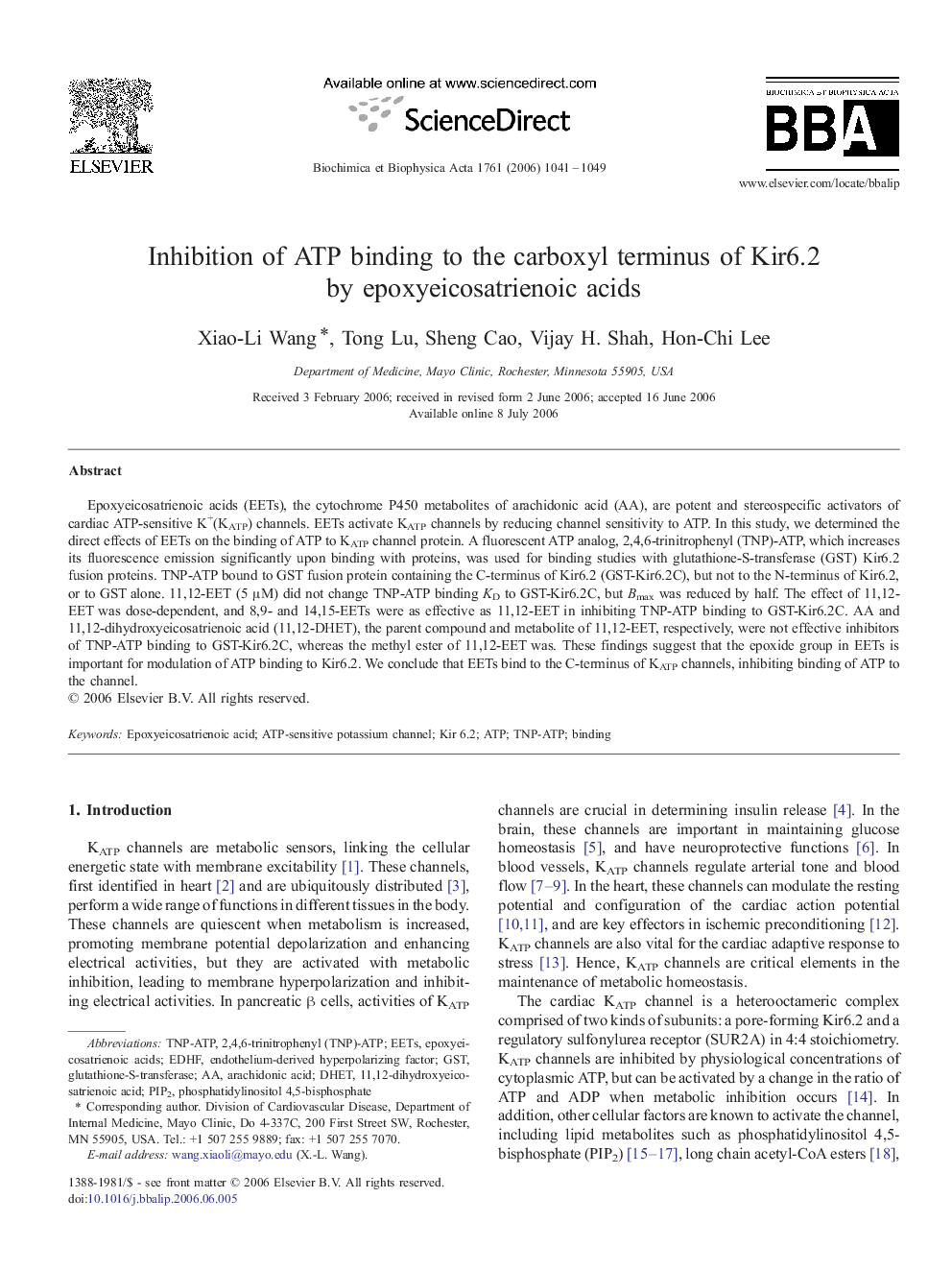| کد مقاله | کد نشریه | سال انتشار | مقاله انگلیسی | نسخه تمام متن |
|---|---|---|---|---|
| 1950273 | 1537818 | 2006 | 9 صفحه PDF | دانلود رایگان |

Epoxyeicosatrienoic acids (EETs), the cytochrome P450 metabolites of arachidonic acid (AA), are potent and stereospecific activators of cardiac ATP-sensitive K+(KATP) channels. EETs activate KATP channels by reducing channel sensitivity to ATP. In this study, we determined the direct effects of EETs on the binding of ATP to KATP channel protein. A fluorescent ATP analog, 2,4,6-trinitrophenyl (TNP)-ATP, which increases its fluorescence emission significantly upon binding with proteins, was used for binding studies with glutathione-S-transferase (GST) Kir6.2 fusion proteins. TNP-ATP bound to GST fusion protein containing the C-terminus of Kir6.2 (GST-Kir6.2C), but not to the N-terminus of Kir6.2, or to GST alone. 11,12-EET (5 μM) did not change TNP-ATP binding KD to GST-Kir6.2C, but Bmax was reduced by half. The effect of 11,12-EET was dose-dependent, and 8,9- and 14,15-EETs were as effective as 11,12-EET in inhibiting TNP-ATP binding to GST-Kir6.2C. AA and 11,12-dihydroxyeicosatrienoic acid (11,12-DHET), the parent compound and metabolite of 11,12-EET, respectively, were not effective inhibitors of TNP-ATP binding to GST-Kir6.2C, whereas the methyl ester of 11,12-EET was. These findings suggest that the epoxide group in EETs is important for modulation of ATP binding to Kir6.2. We conclude that EETs bind to the C-terminus of KATP channels, inhibiting binding of ATP to the channel.
Journal: Biochimica et Biophysica Acta (BBA) - Molecular and Cell Biology of Lipids - Volume 1761, Issue 9, September 2006, Pages 1041–1049